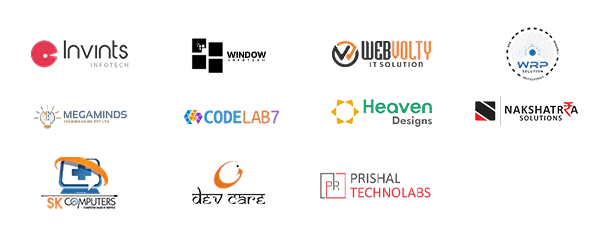CRM
In the world of business, a lead is often the first crucial step towards securing a significant deal or project. However, the journey from a lead to a successful sale can be intricate and demanding. That's where our platform comes in. We specialize in helping organizations streamline their lead management processes, ensuring that no potential opportunity goes unnoticed. Beyond lead tracking, we also excel in delivering exceptional customer service, recognizing that customer engagement is pivotal in converting leads into successful ventures. With our assistance, businesses can navigate the lead-to-sale path with precision and professionalism.

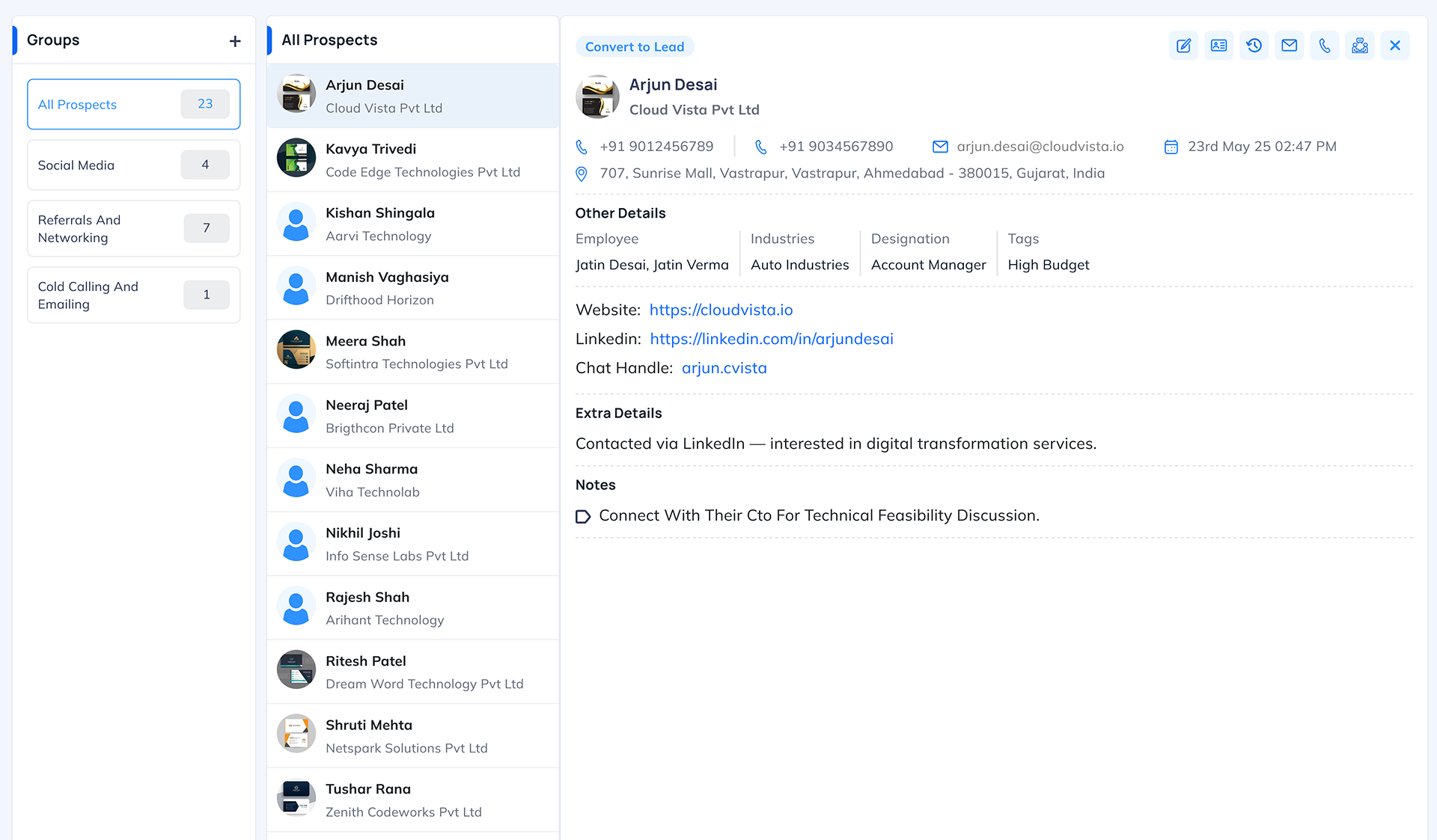
Efficiently manage clients and prospects, ensuring effective communication and engagement.
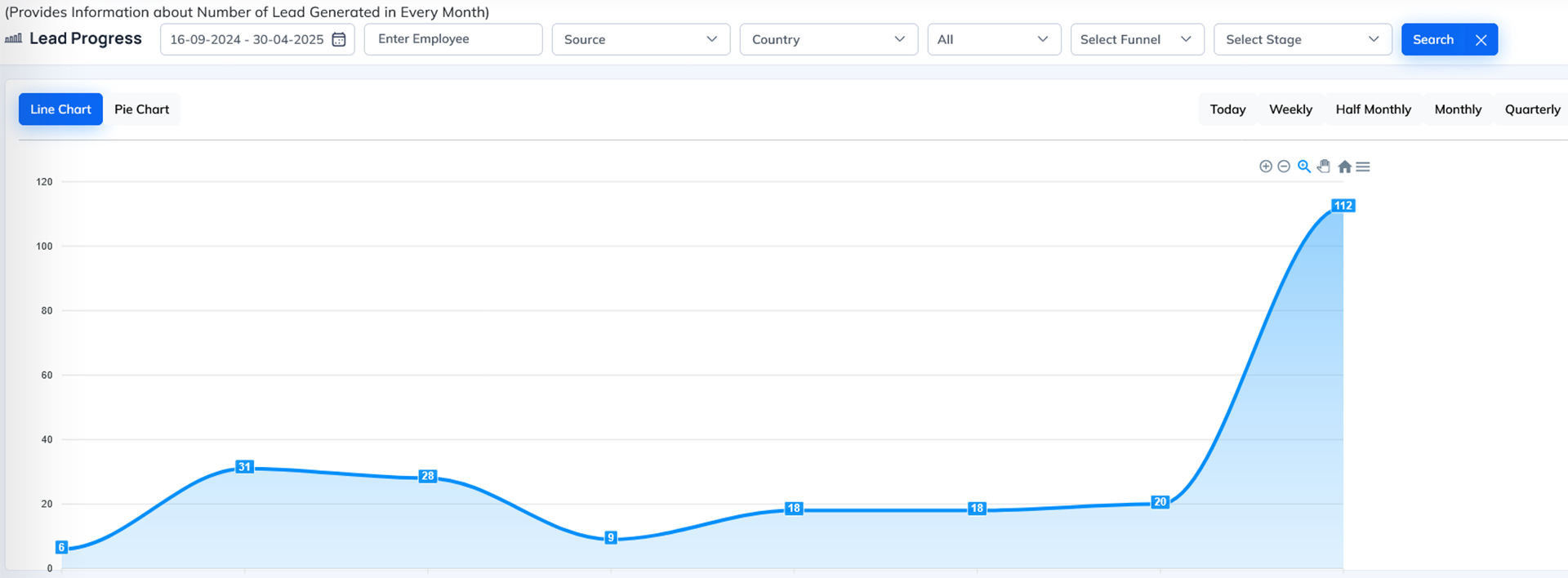
Recognize top performers within the sales team to leverage their expertise.
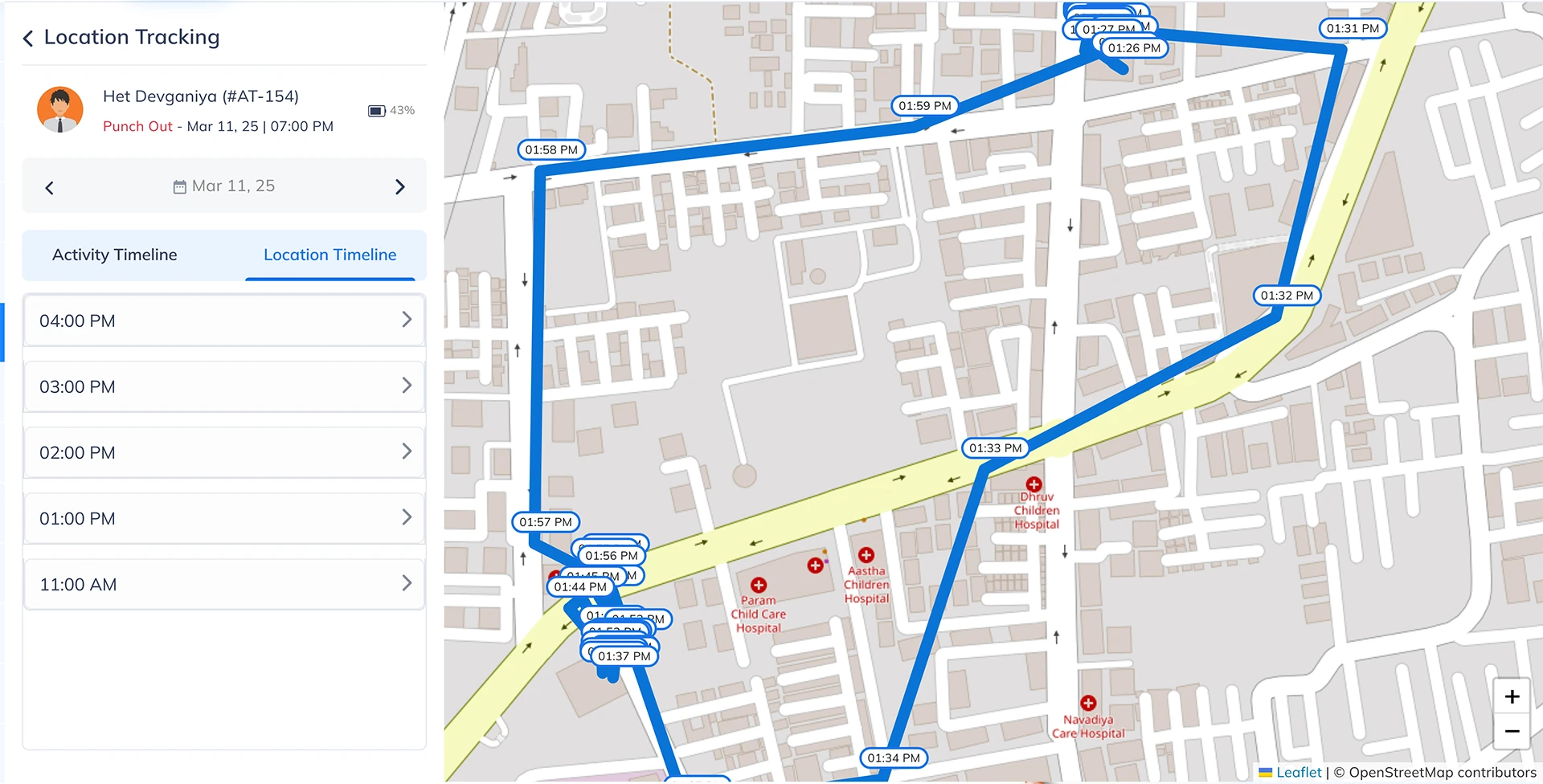
Implement a system to monitor the whereabouts of field employees. This strategy is essential for assessing their productivity and efficiently allocating support tickets according to their geographical locations.

Determine the most effective channels for lead generation to optimize resources.
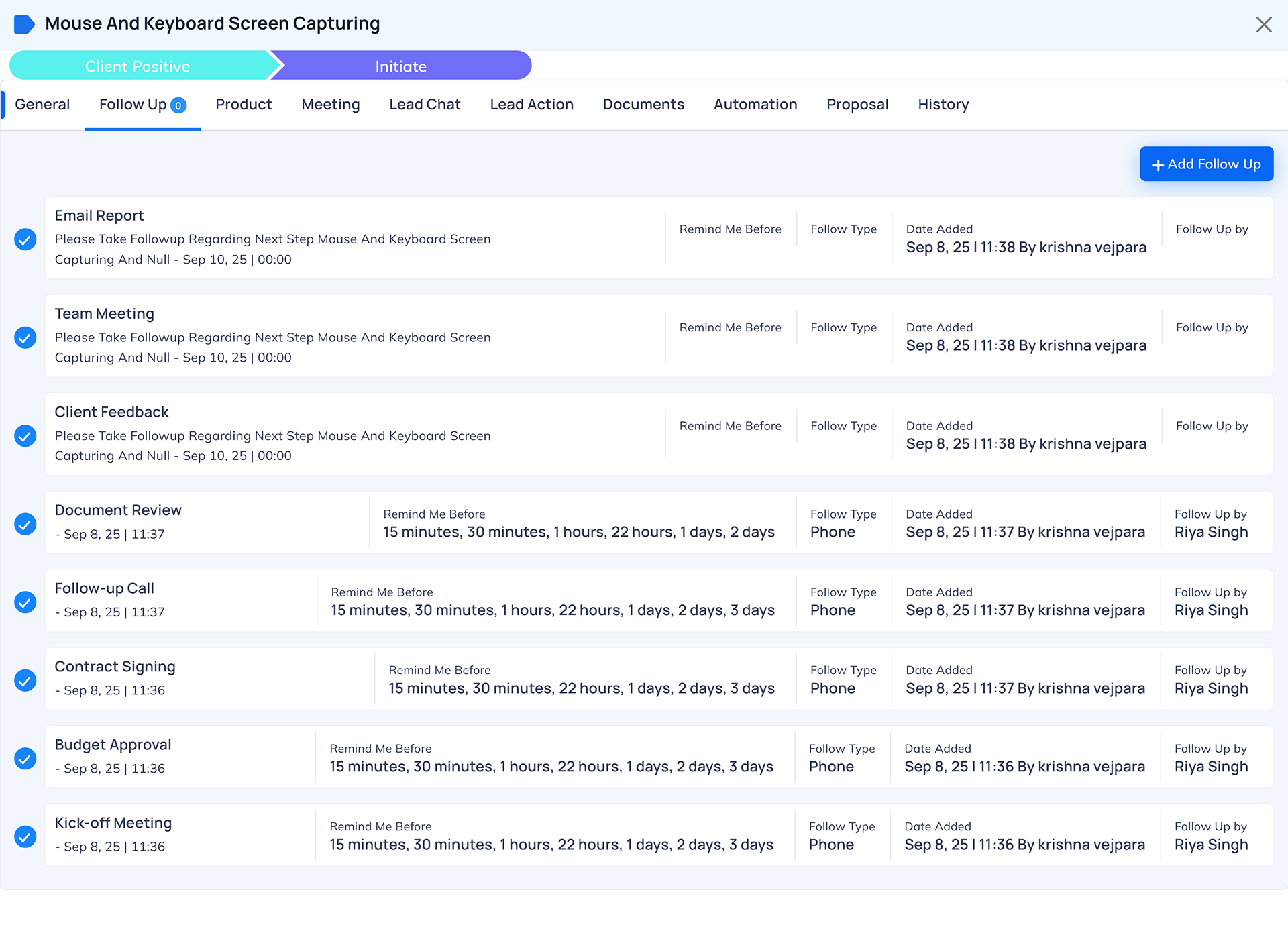
Implement auto-reminders for follow-up and meetings, enhancing time management.
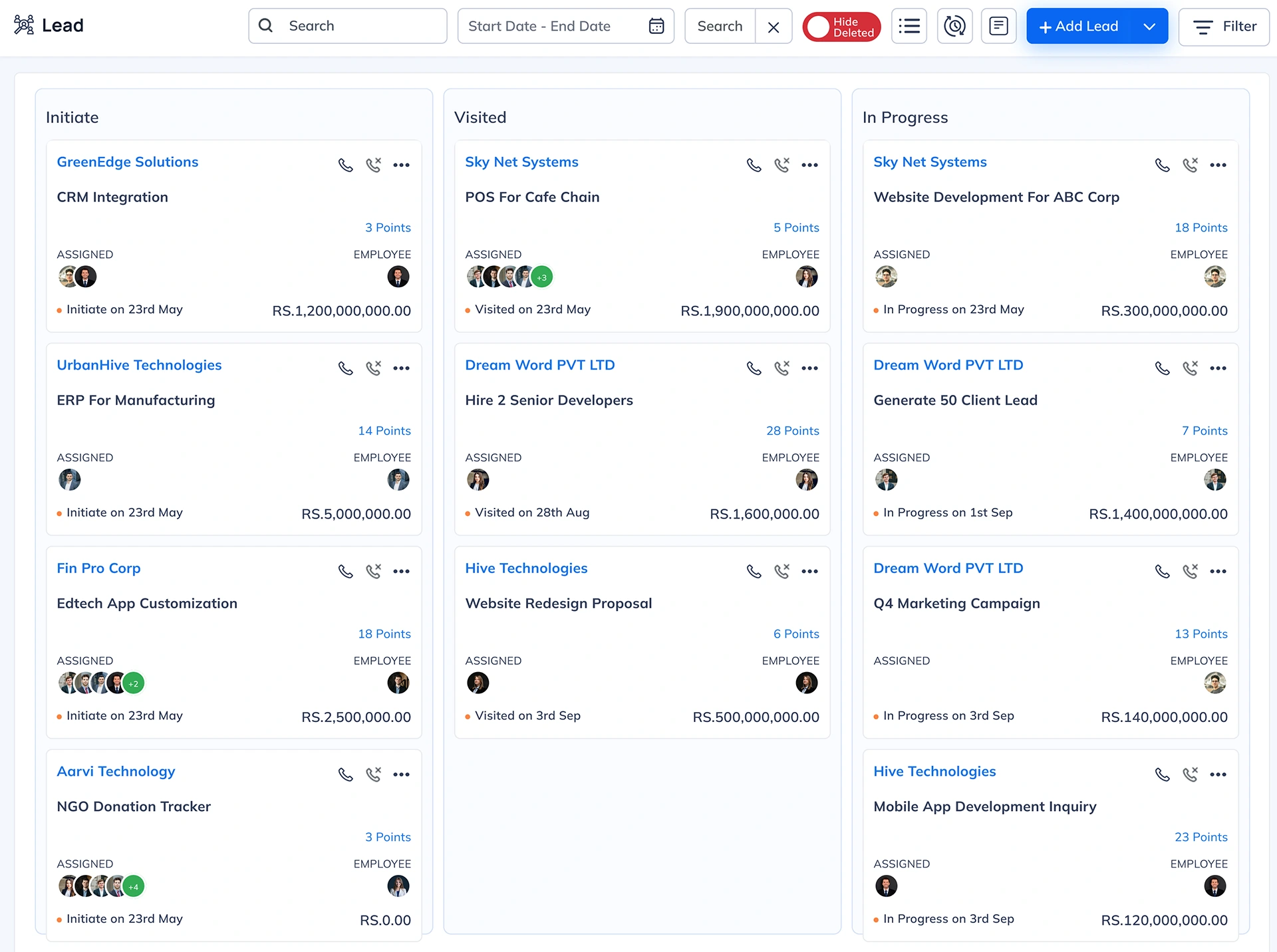
Streamline client service processes to reduce response times and enhance satisfaction.
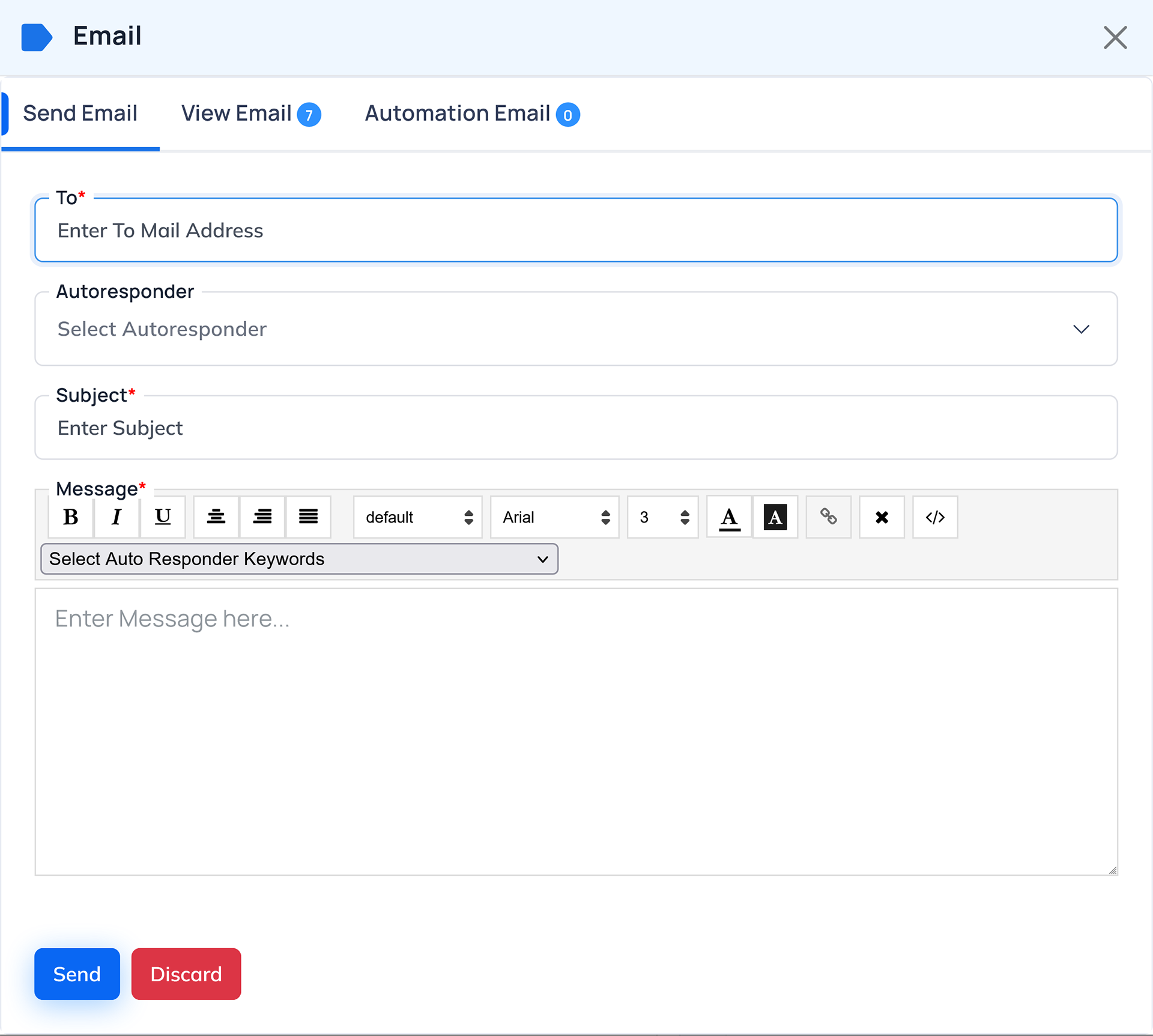
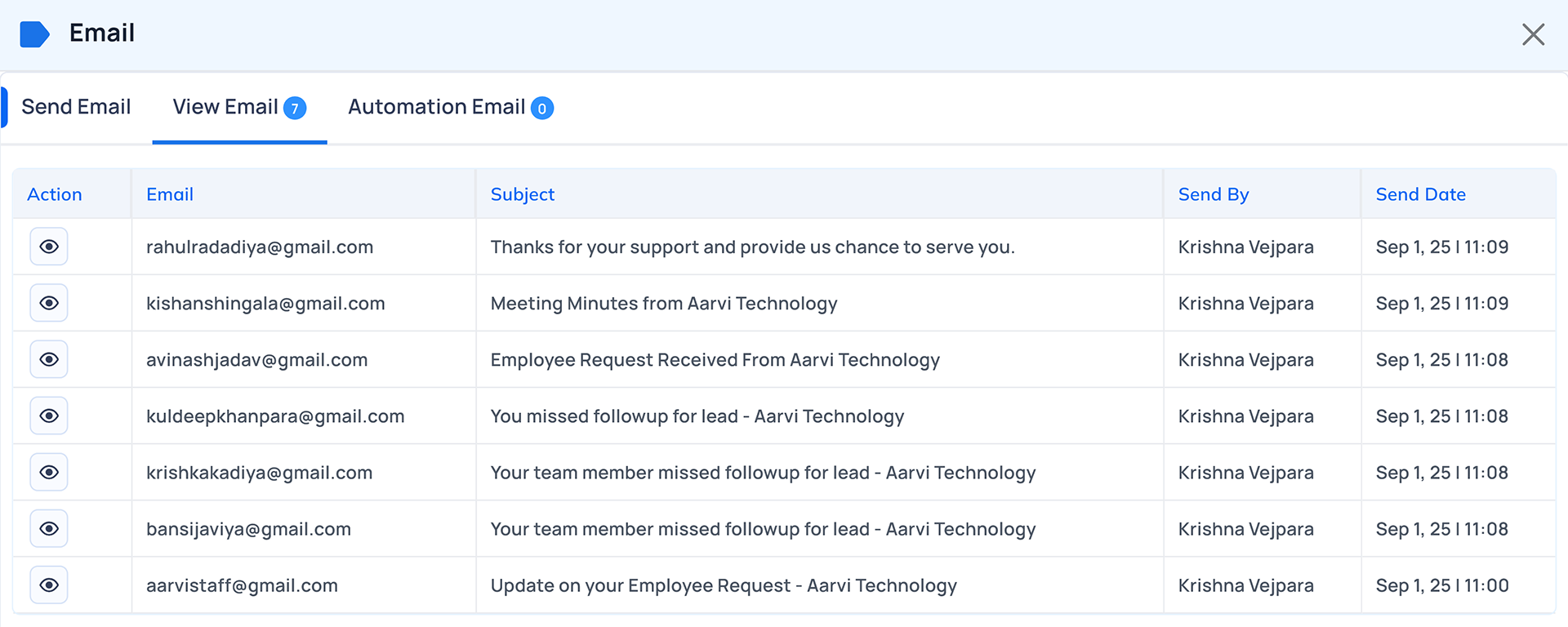
Centralize all communication channels for convenience and organization.
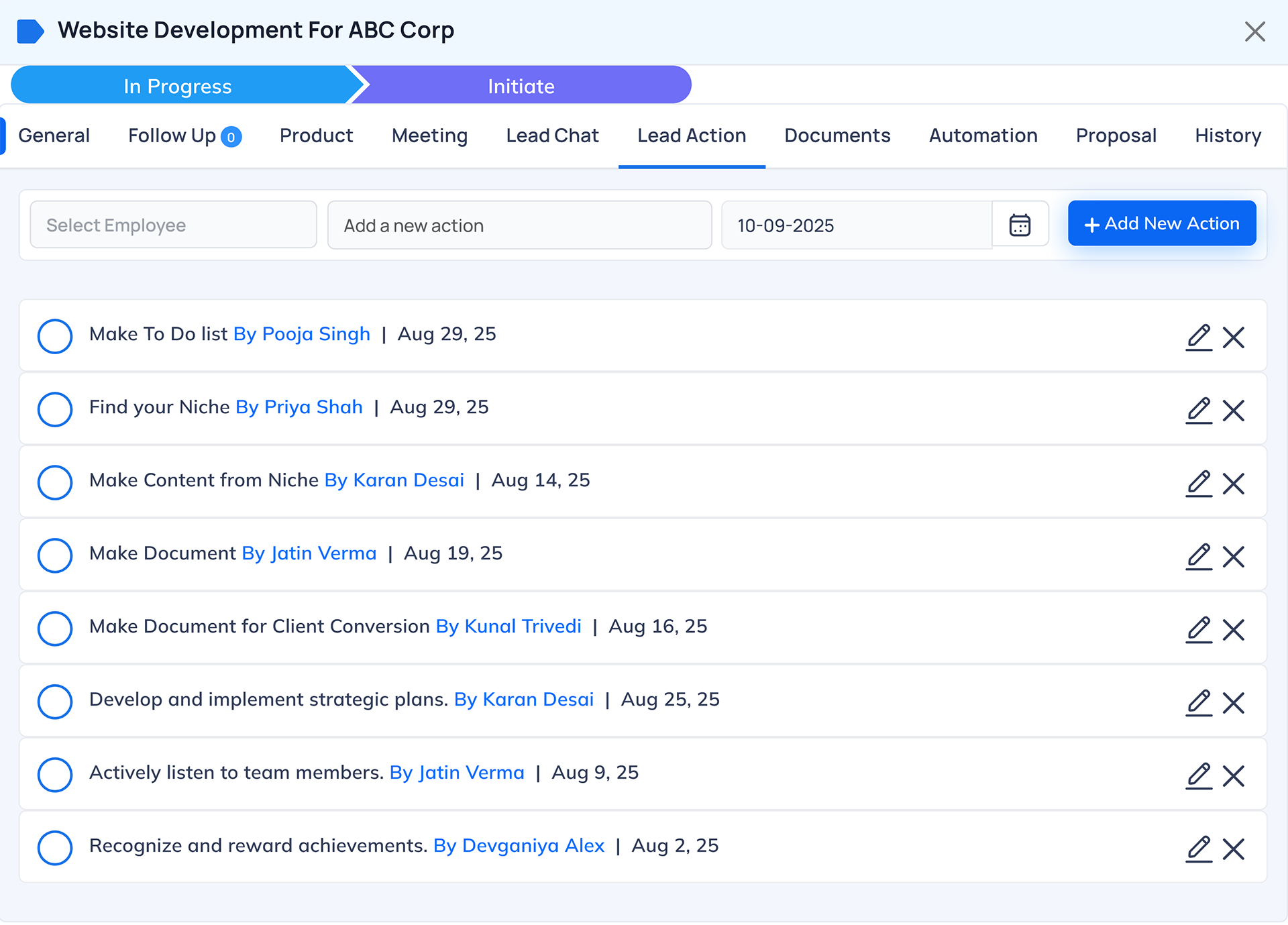
Define key actions for leads and track their progress towards conversion.
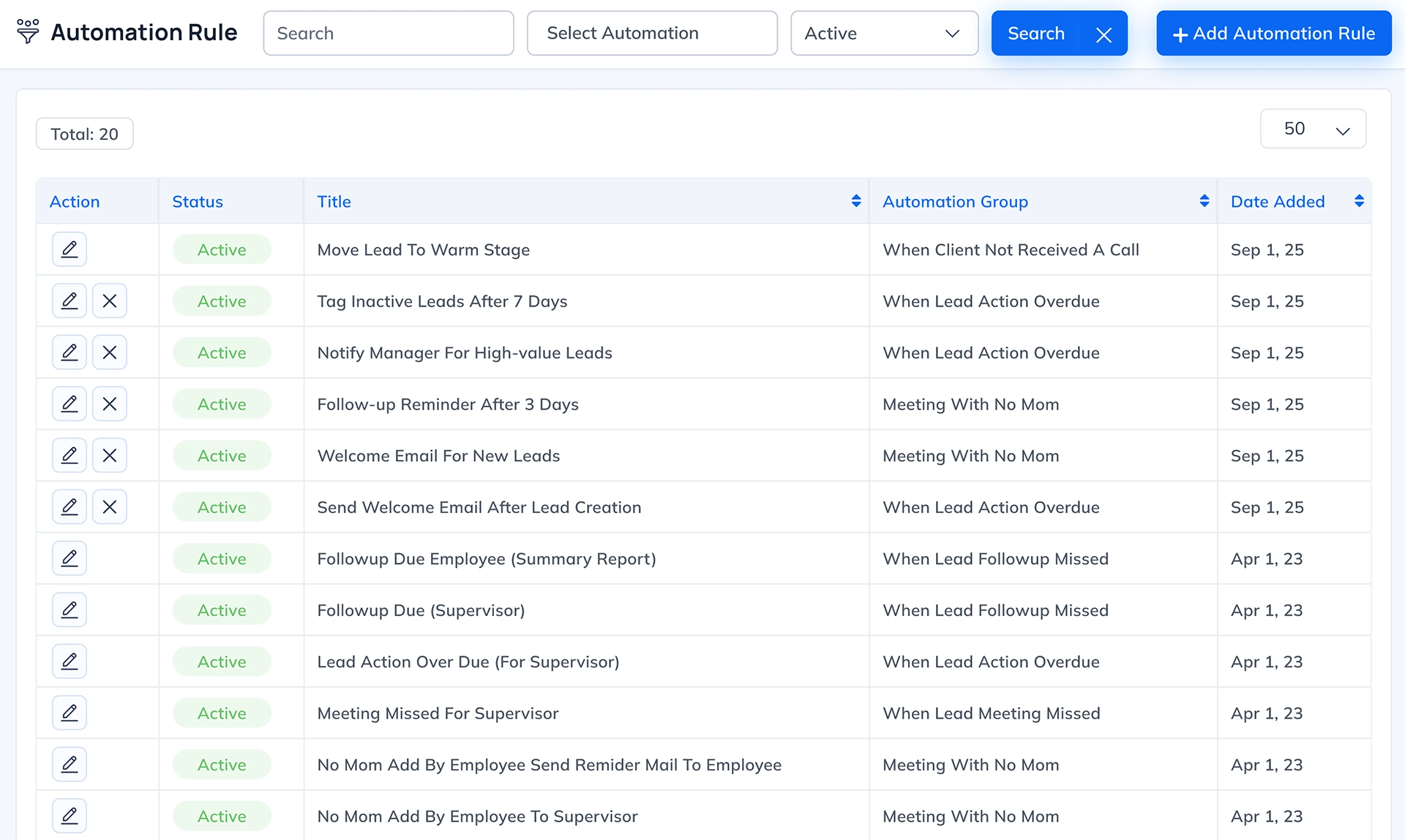

Set up automation rules for automatic communication to improve efficiency.
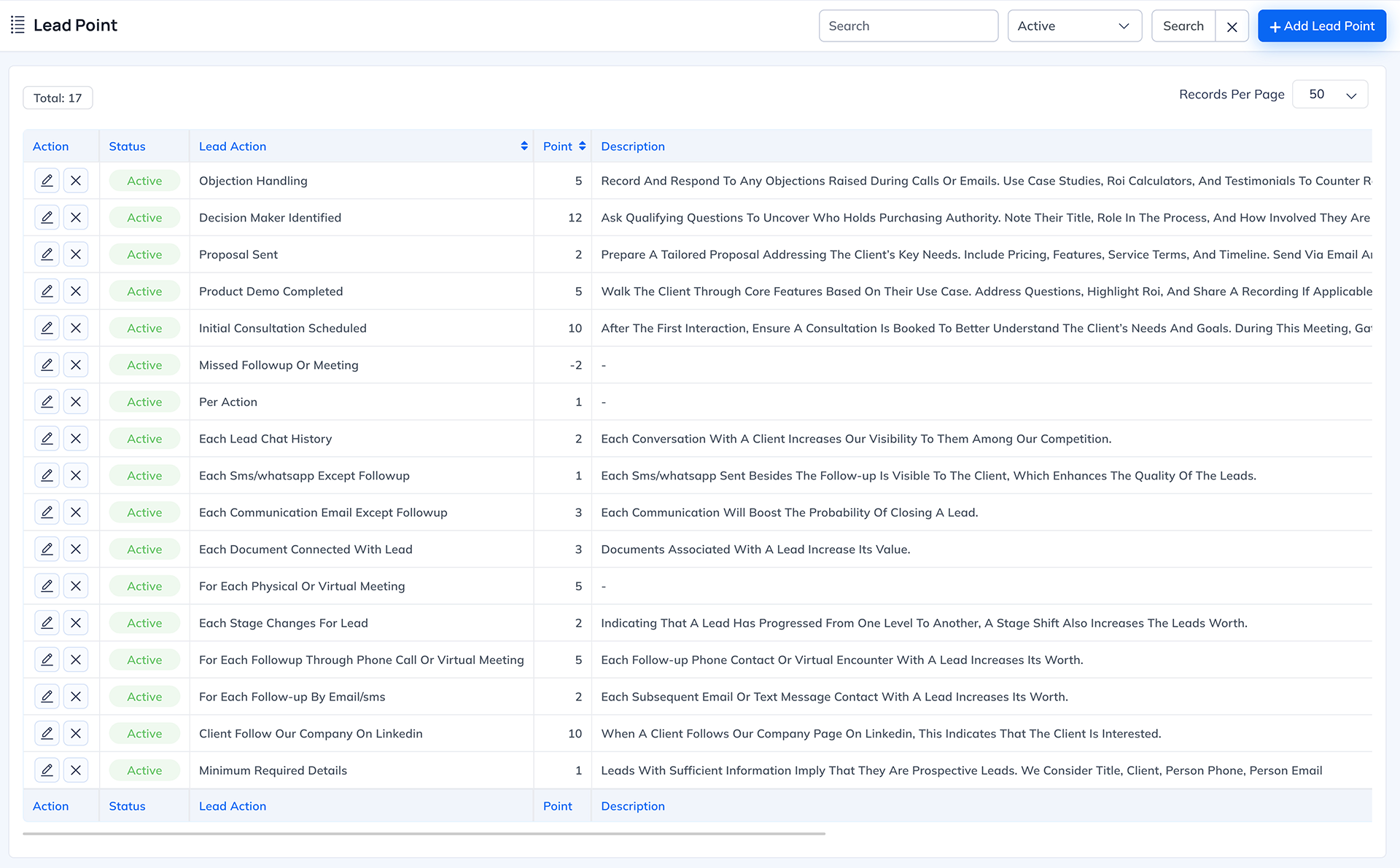
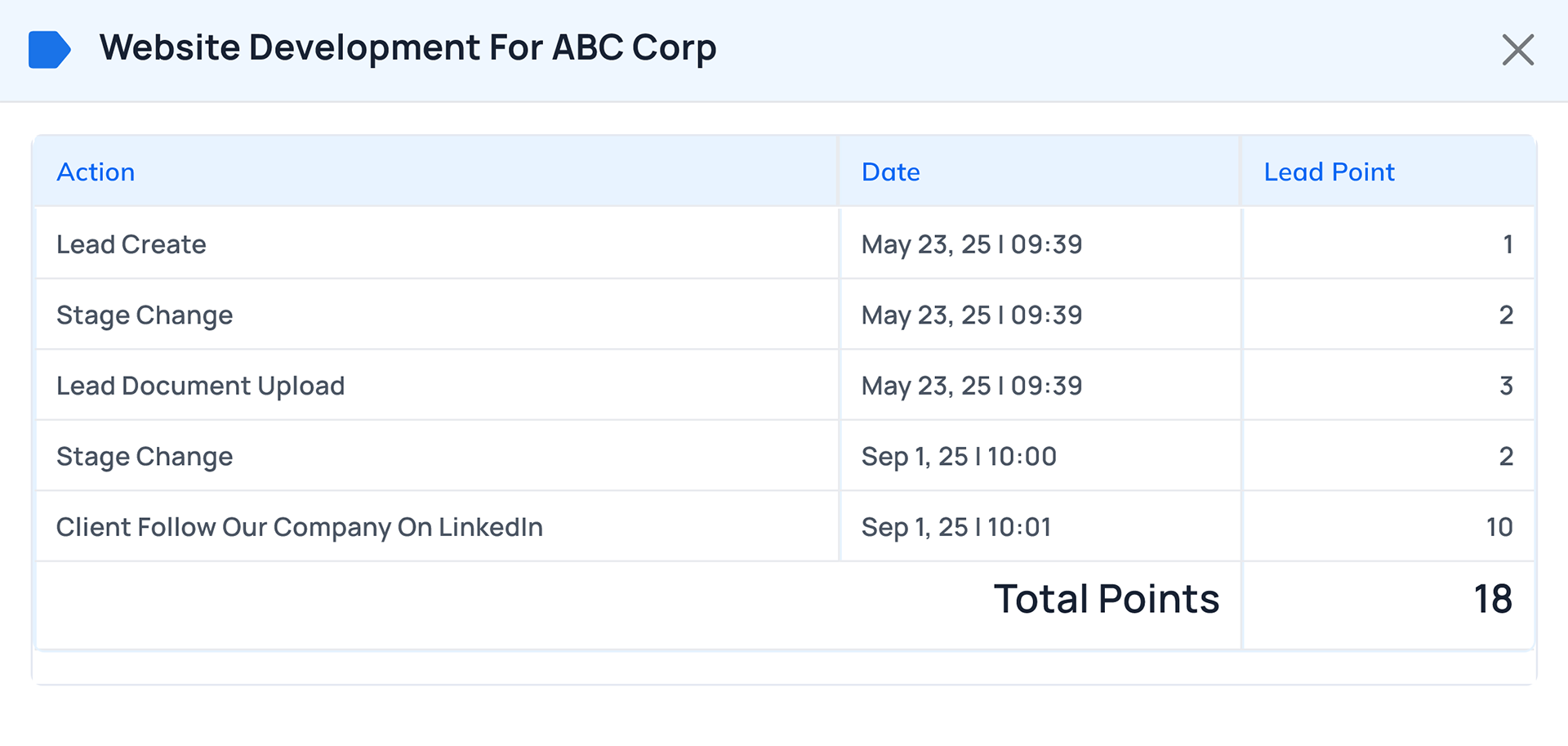
Measure leads based on points earned through specific actions, allowing for prioritization and focus.
Capabilities
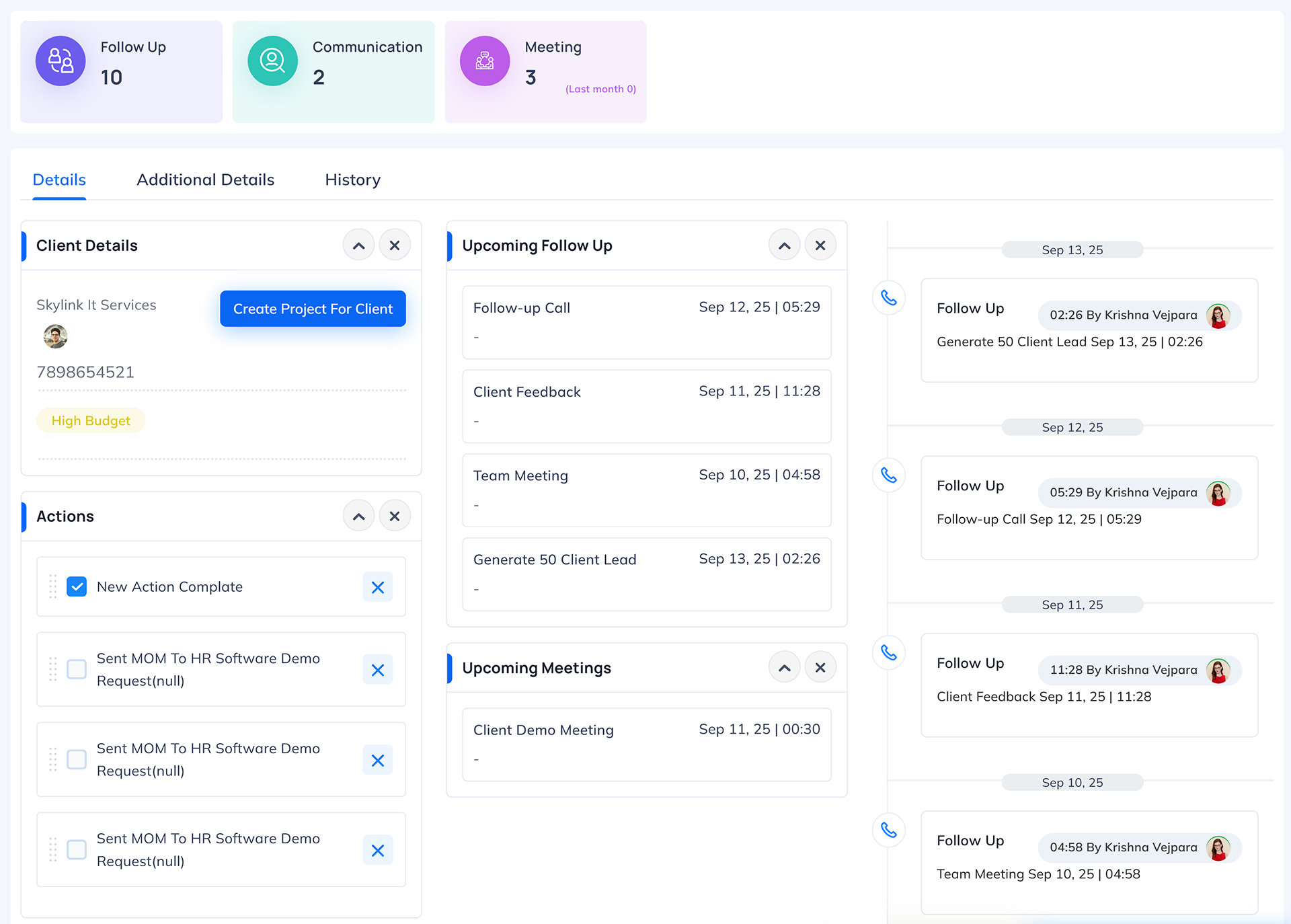
Lead Dashboard
Lead Summarization:
Get a concise summary of all your leads and their current status.
Upcoming Activities:
Stay informed about upcoming lead-related activities and engagements.
Lead Progress Tracking:
Monitor the progress of leads, ensuring efficient management.
Sales Team Performance:
Access data on the performance of the sales team to gauge effectiveness and productivity.
Centralized Overview:
All of this information is presented in a centralized overview, facilitating informed decision-making and sales success.
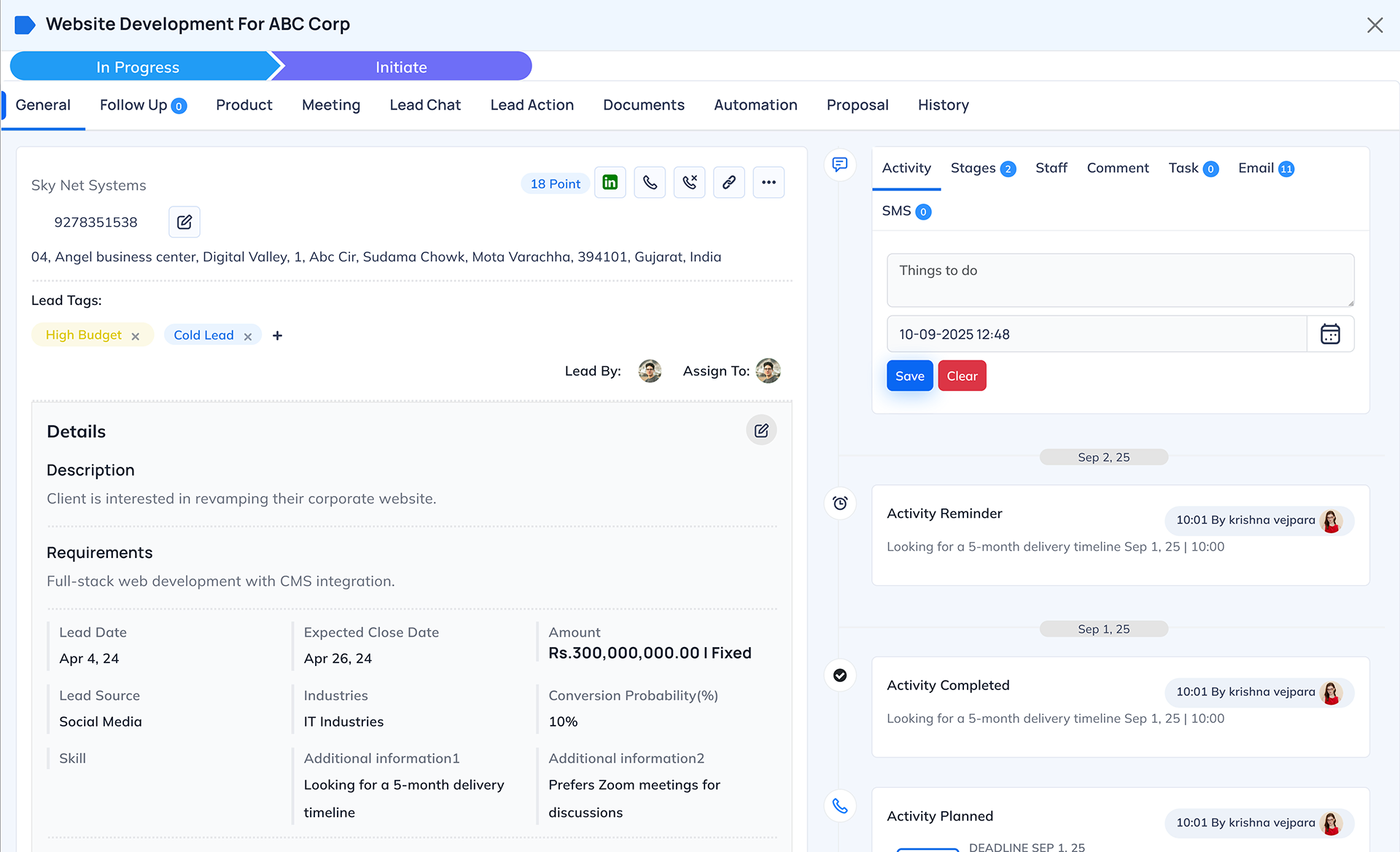
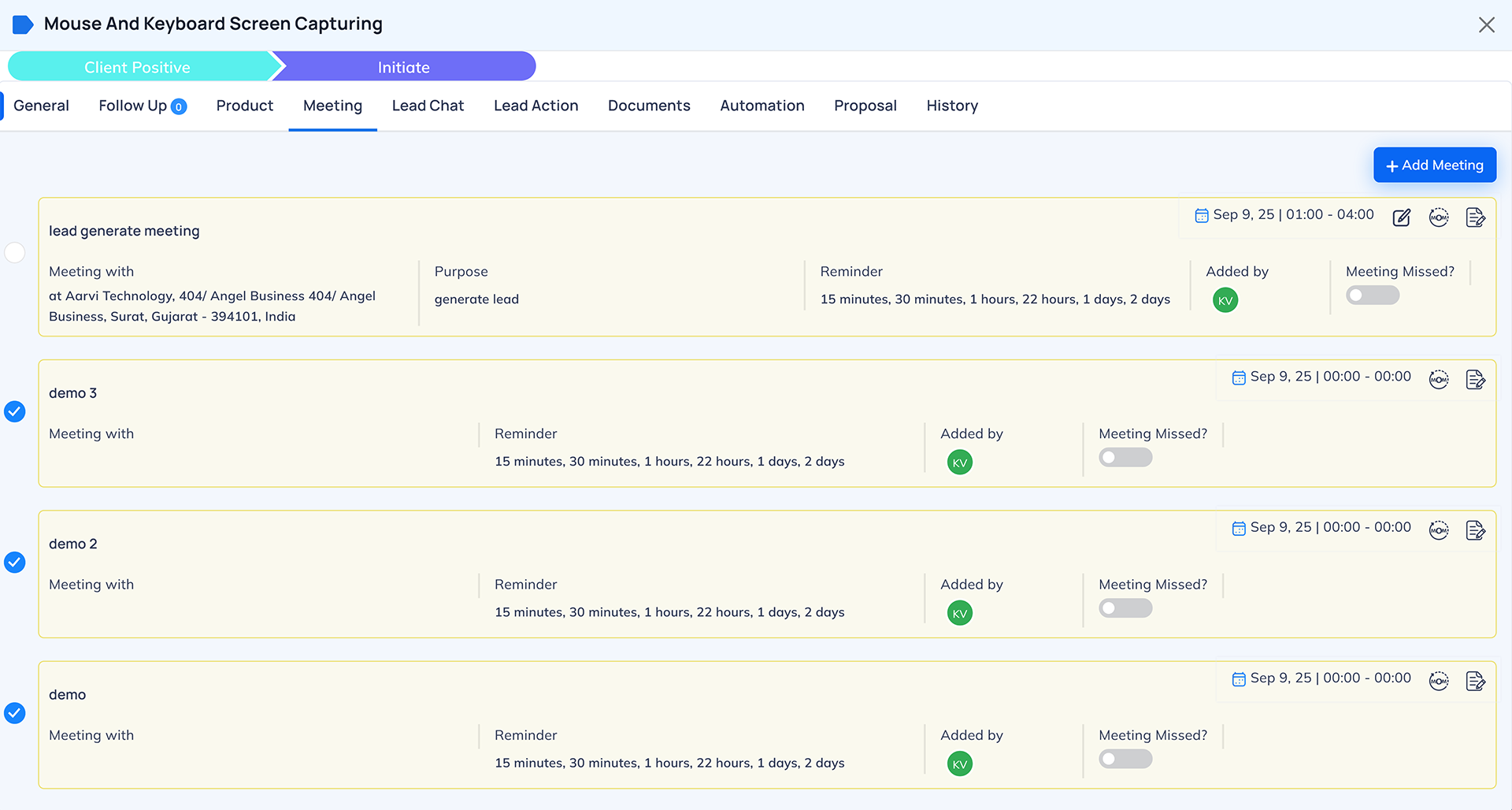
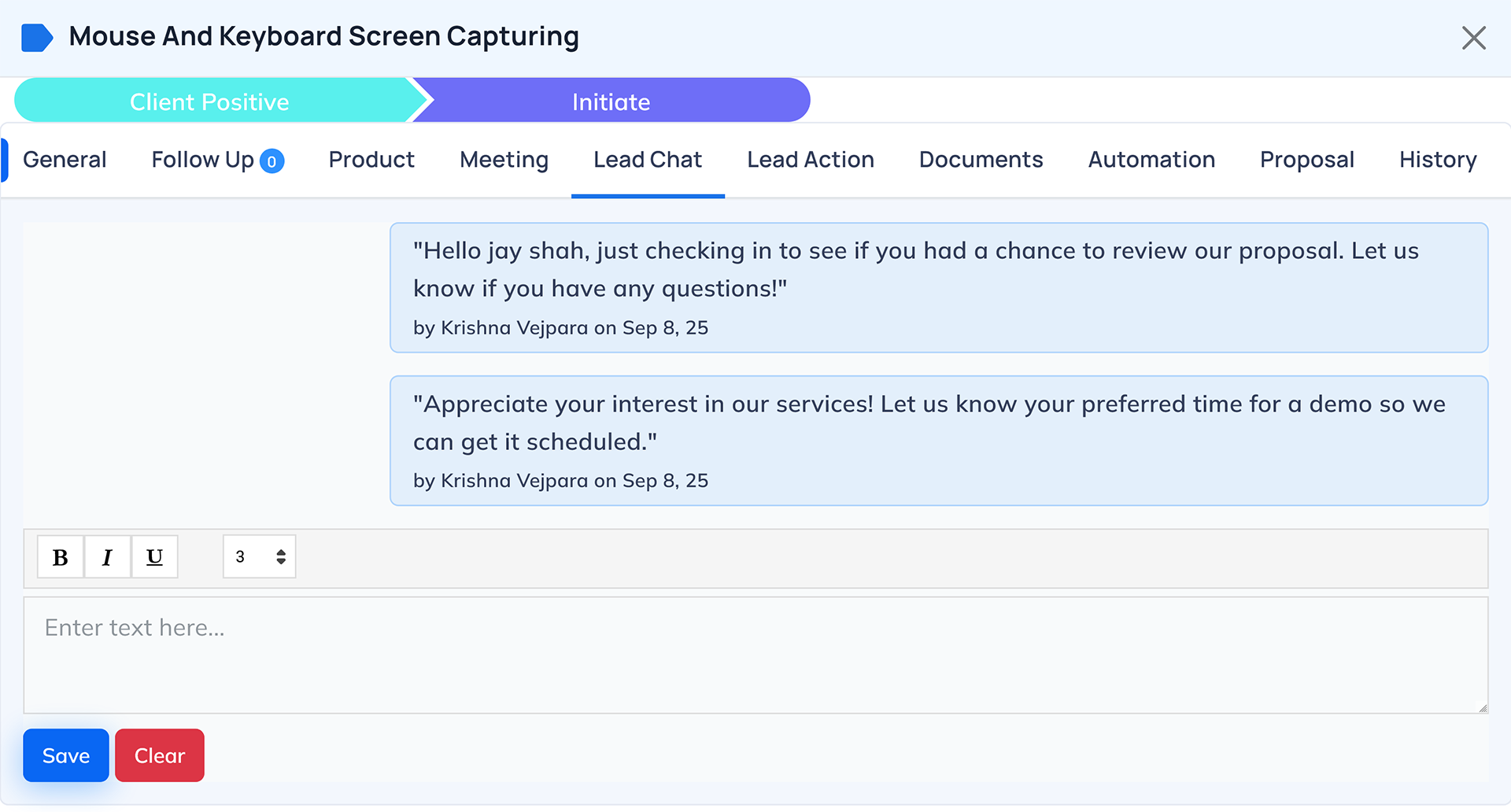
Leads
Manage below operations related with lead
Lead Creation for Clients:
Easily create leads for prospective clients, ensuring all essential details are recorded.
Lead Activity Management:
Efficiently manage lead-related activities, keeping track of interactions and tasks.
Lead Stage Management:
Organize leads into stages, providing clarity on their progression.
Team Member Assignment:
Assign or remove team members to/from specific leads, ensuring the right personnel are involved.
Document Management:
Store and manage documents related to each lead, facilitating easy access and reference.
Client Follow-Up:
Implement a structured system for client follow-up to maintain engagement and nurture relationships.
Client Meetings:
Schedule, manage and track client meetings within the platform.
Multi-Channel Communication:
Communicate with clients via Email, SMS, or WhatsApp directly through the platform.
Additional Information:
Capture and manage additional information specific to each lead.
Lead Chat History:
Maintain a history of lead communication, providing context and continuity.
Action Definition:
Define specific actions for each lead and track their progress.
Lead Point System:
Establish a point system for leads based on their actions, allowing for prioritization and evaluation.
Employee Location Tracking
Real-Time Employee Location Monitoring:
Once employees clock in, the Semsto application continually tracks their locations until they clock out, providing real-time oversight of field personnel.
Productivity Analysis Through Location Data:
By tracking employee movements, the application offers valuable insights into their work patterns, enabling a data-driven approach to assess and enhance productivity.
Strategic Support Ticket Assignment:
The feature facilitates the allocation of support tickets based on the current location of employees, ensuring faster response times and more efficient service delivery.
Optimized Field Operations:
With the ability to monitor employee locations, organizations can streamline field operations, reducing travel times and improving overall operational efficiency.
Enhanced Accountability and Transparency:
The tracking feature promotes accountability among employees and provides transparency into field operations for management, fostering a more trustworthy work environment.
Data-Driven Decision Making:
The accumulation of location data over time can inform strategic decisions, such as resource allocation and territory planning, based on empirical evidence of field activity patterns.
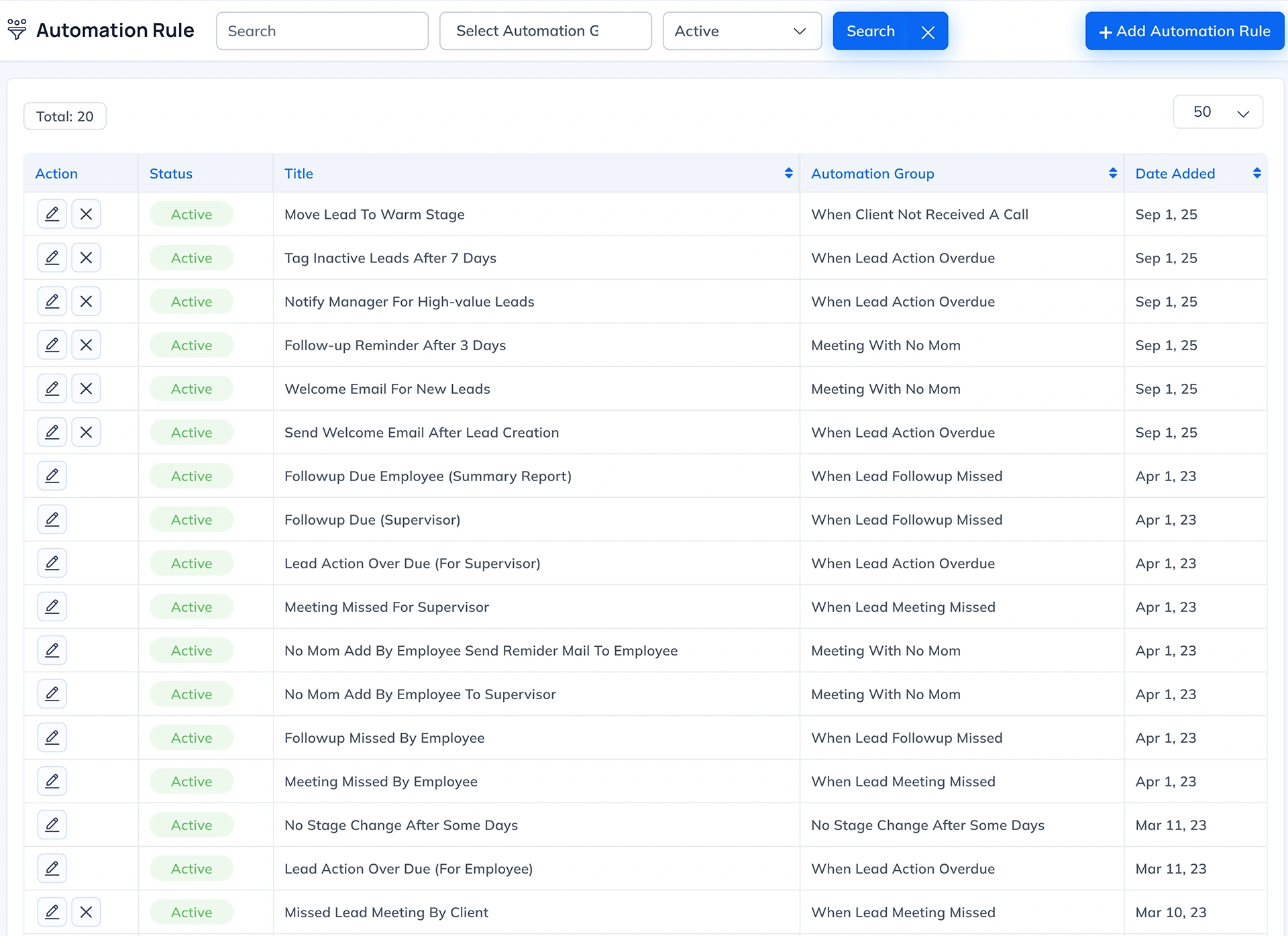
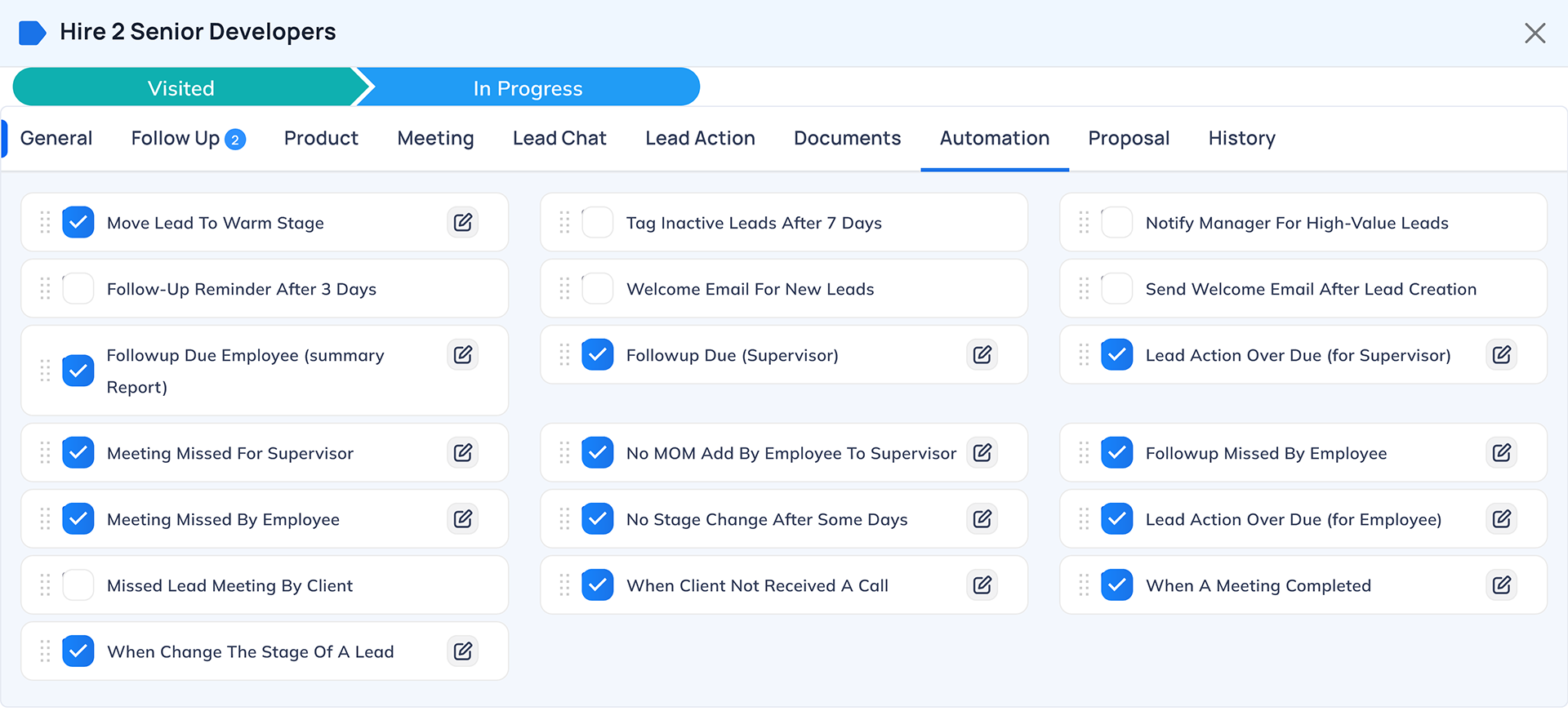
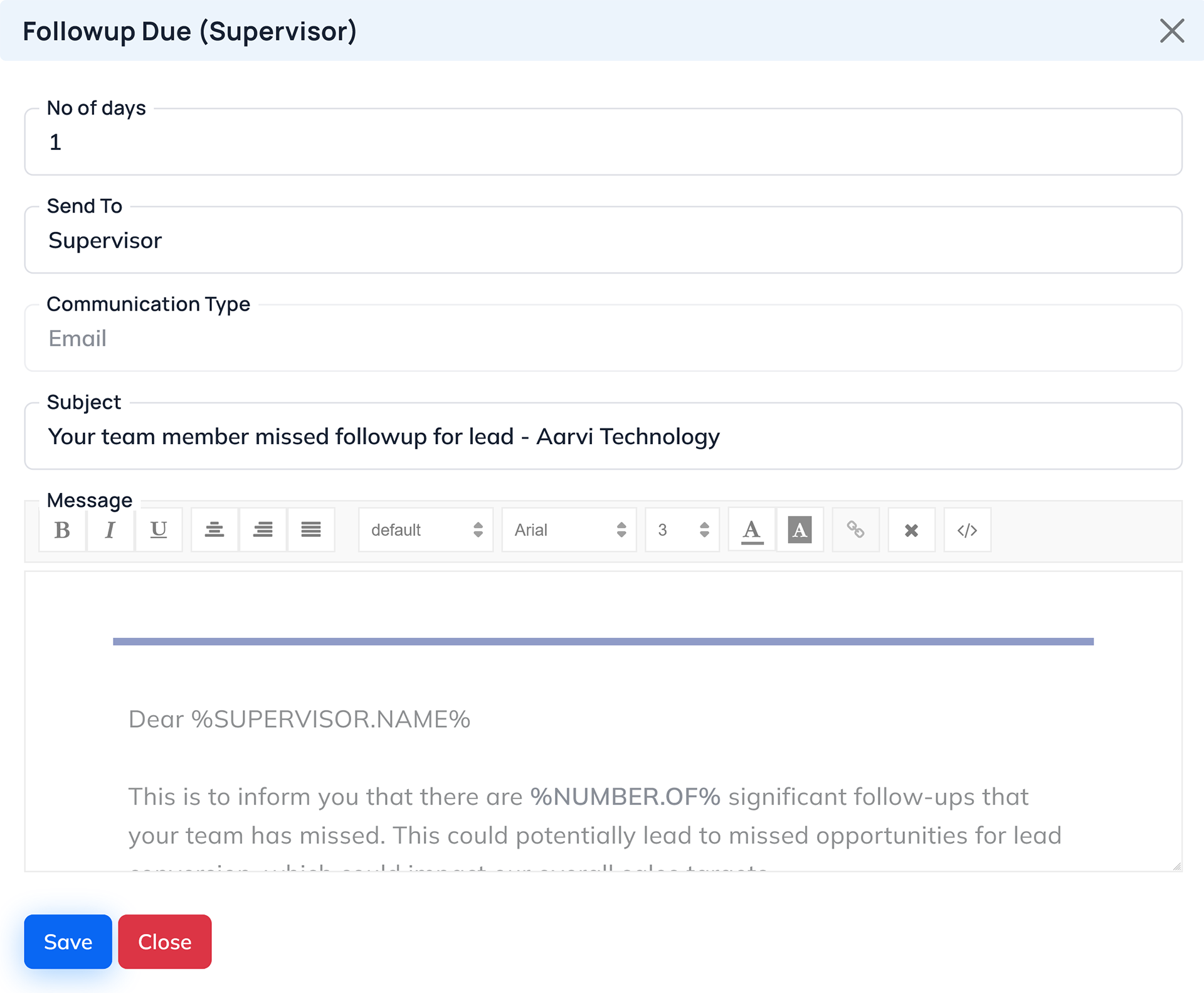
Lead Automation
Lead Automation feature is designed to streamline and automate the lead follow-up and communication process. This feature offers rule-based automation for targeted communication, enhancing efficiency and saving time for the sales team.
Rule Definition:
Admins can easily implement flexible rules to any lead, with the system dynamically adapting to changes in market trends or strategies.
Targeted Communication:
The feature enables automated, personalized interactions with leads based on set rules, ensuring timely and relevant communication.
Efficiency and Timesaving:
This aspect significantly reduces manual tasks for the sales team, allowing them to concentrate on high-value activities with regular, customizable follow-ups based on predefined intervals or lead actions.
Tracking and Analytics:
The feature allows performance monitoring and data-driven decisions, refining the lead nurturing process with conversion insights..
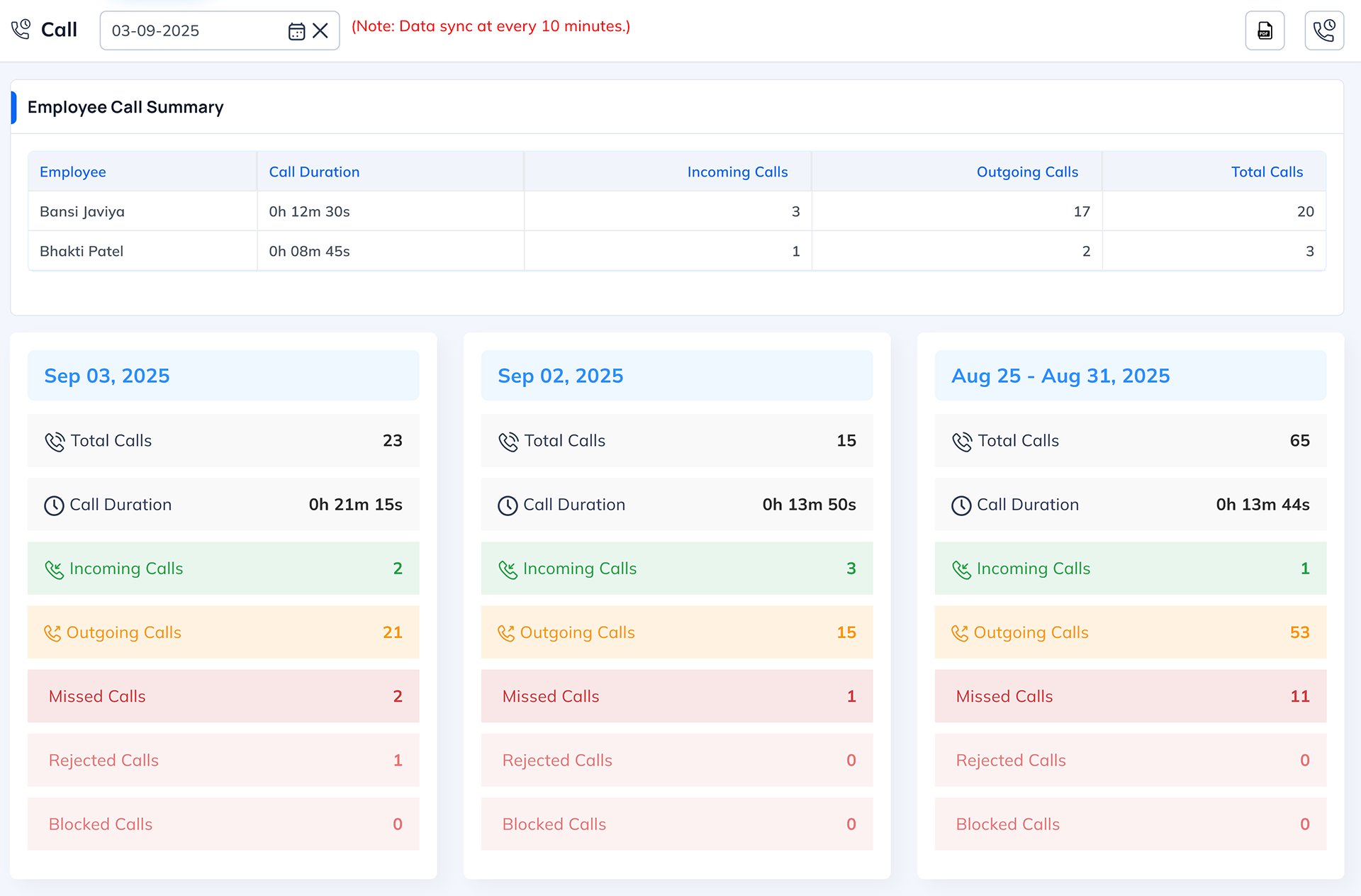
Call-Log
Call Tracking:
Keep a record of all calls made, received, or rejected directly in the system.
Time Monitoring:
Measure the duration of each attended call to evaluate engagement levels.
Performance Insights:
Identify the productivity of telecallers and sales team members through detailed logs.
Activity Transparency:
Provide management with clear visibility into communication efforts and follow-ups.
Team Evaluation:
Use call data to assess efficiency, spot training needs and improve conversion rates.
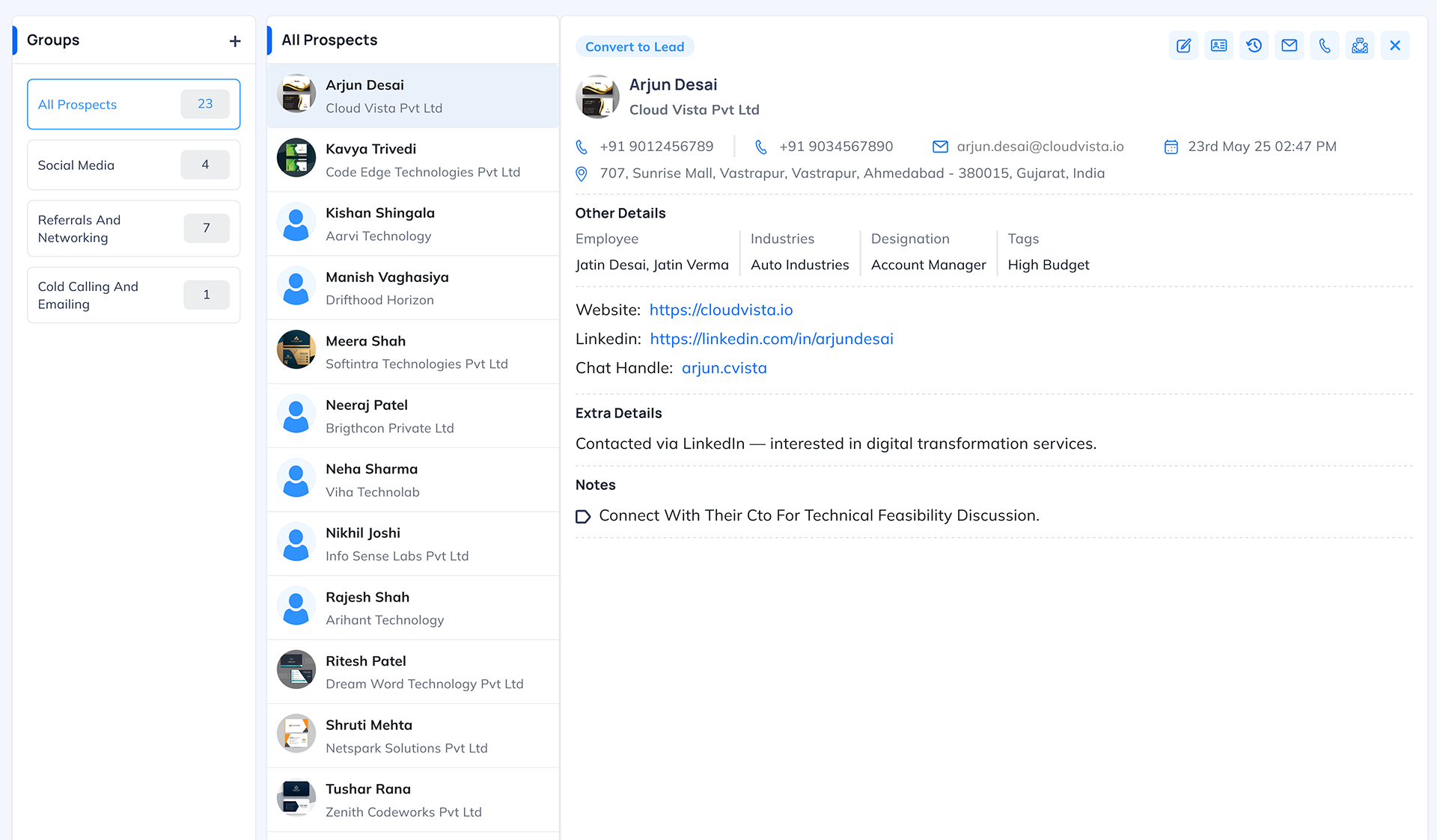
Prospects
Prospect Definition:
Prospects are individuals with potential for future business engagement.
Networking Opportunities:
Encountered at conferences, expos and fairs, among other events.
Information Capture:
Save prospect information for strategic marketing purposes.
Targeted Communication:
Use captured data to tailor marketing strategies for effective prospect conversion.
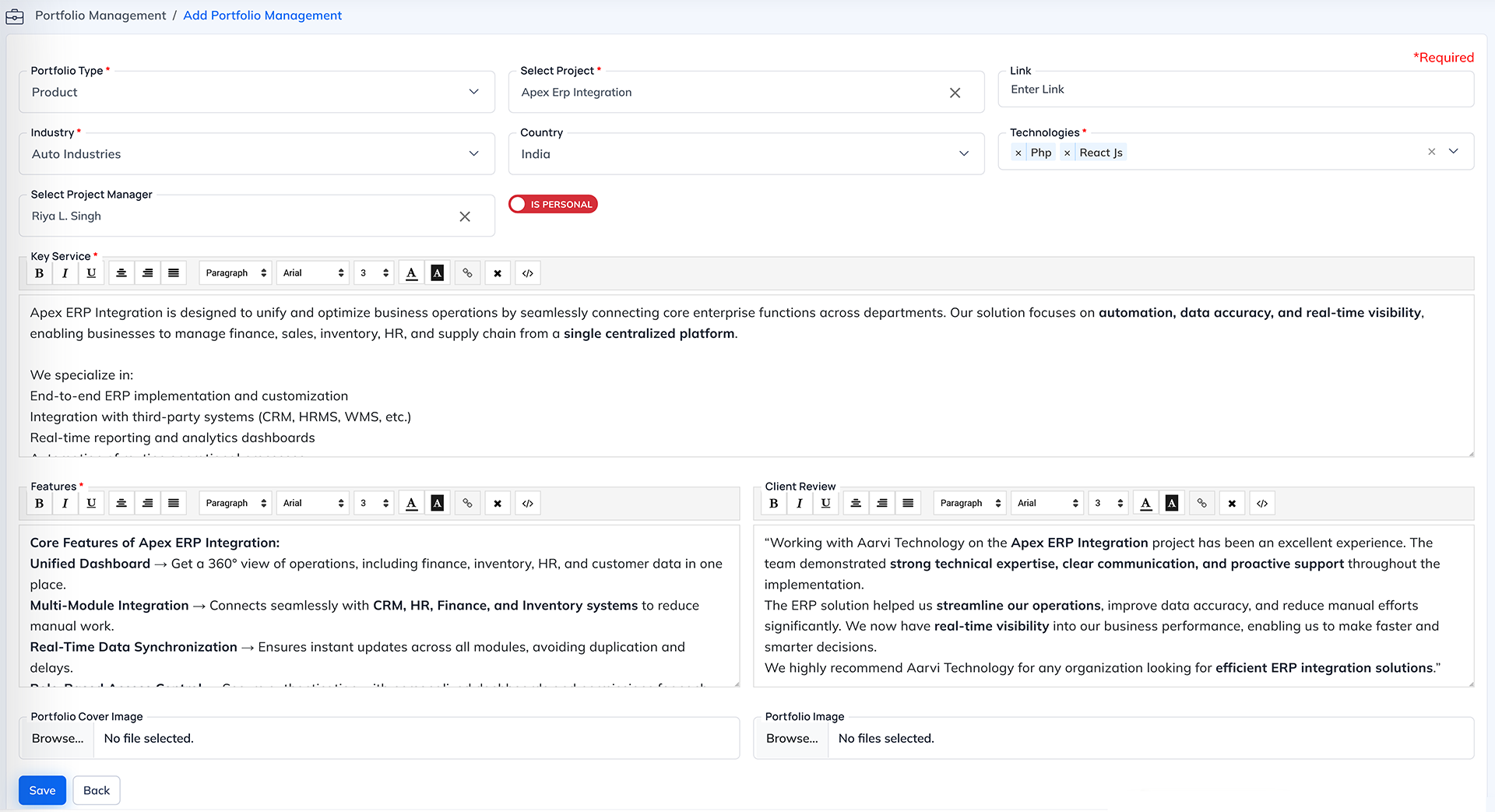

Portfolio Management
Portfolio Understanding:
Ensuring that your workforce comprehends the contents of your portfolio is essential.
Client Acquisition:
A well-maintained portfolio is a key asset for attracting new clients.
Sales Team Knowledge:
Keeping your sales team informed about completed projects is achieved through the portfolio.
Effortless Sharing:
Sharing your portfolio with potential clients is made easy with a simple click, facilitating effective presentation and demonstration of expertise.
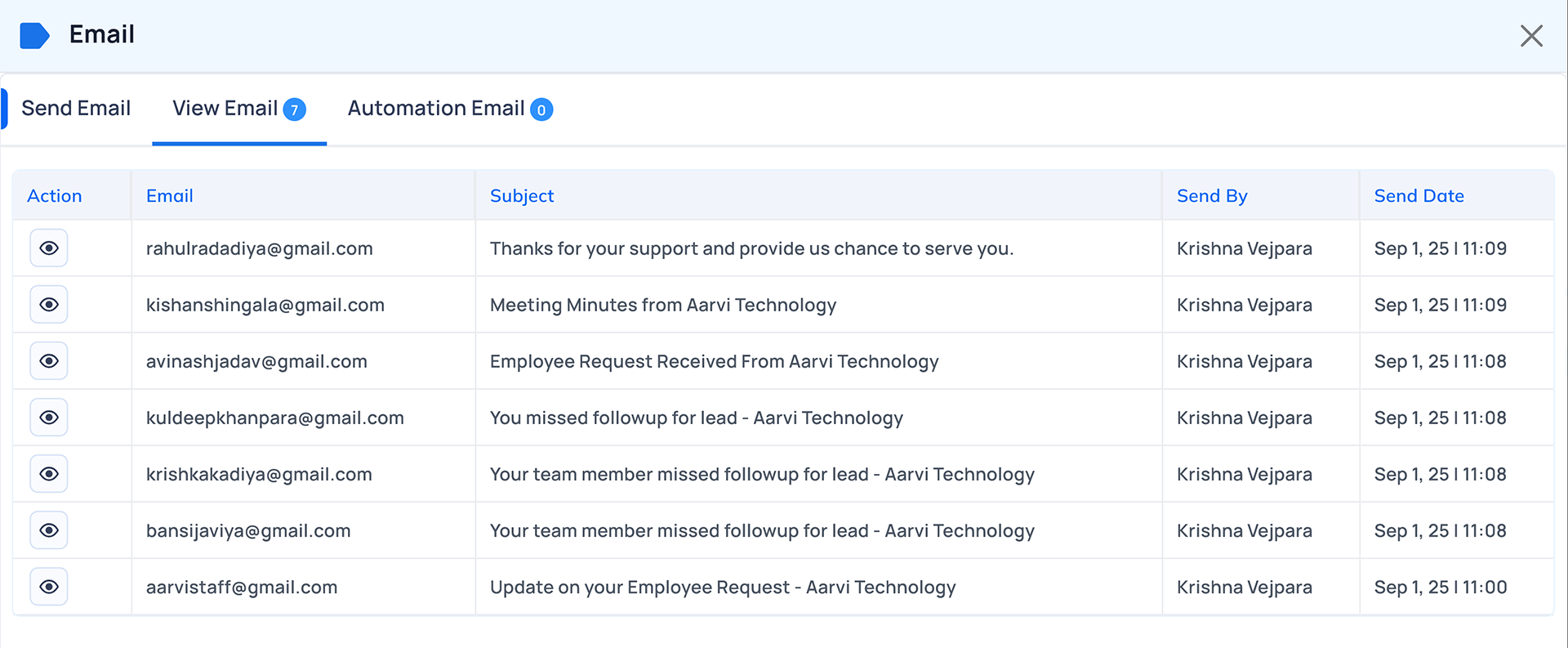
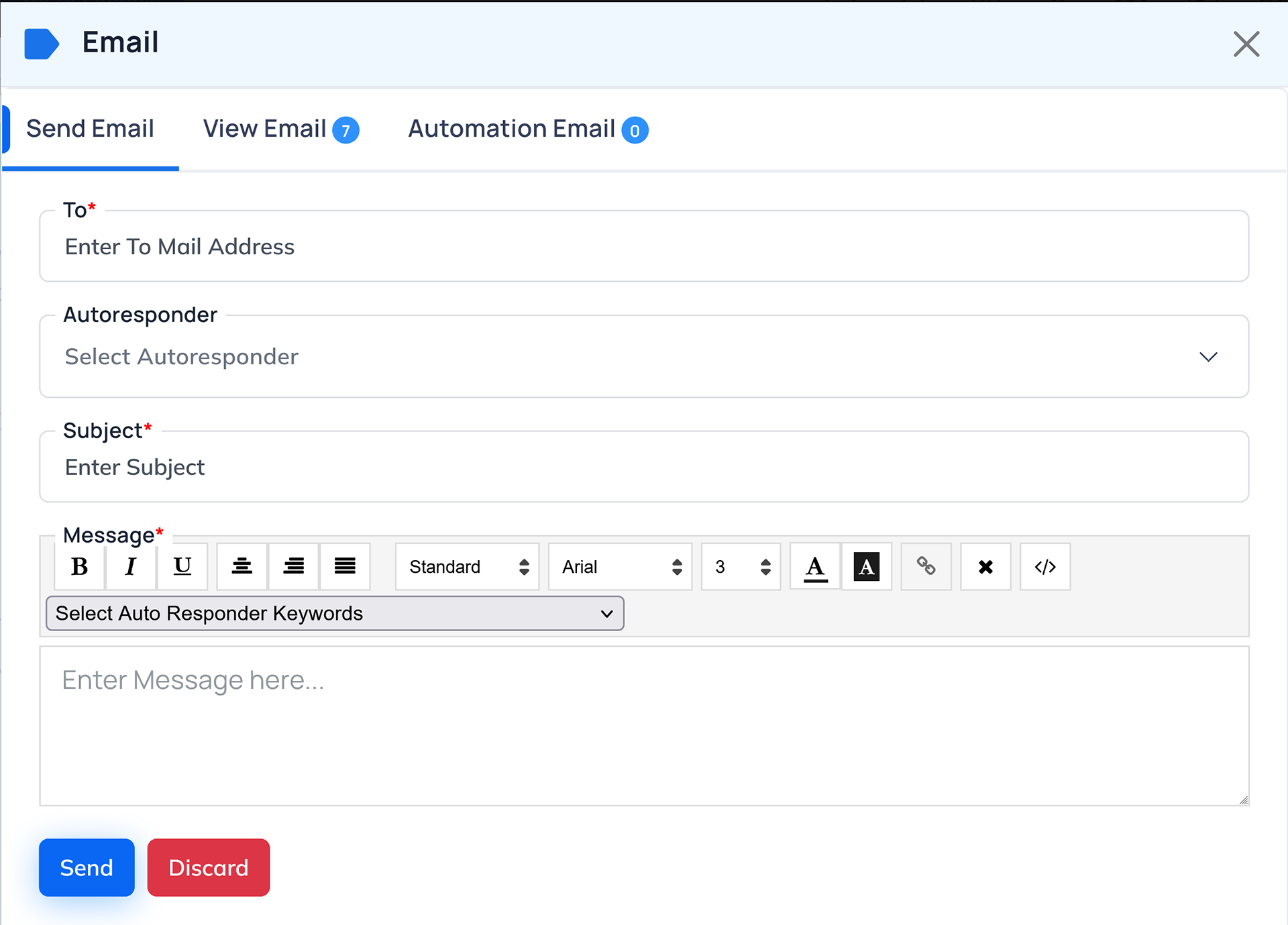
Communication
Communication for Expansion:
Effective communication is vital for the growth of any organization.
Customer Engagement:
Stay in touch with customers via email, text messages and WhatsApp.
Automation Rules:
Define automation rules for sending automated emails to both customers and sales teams.
Efficiency and Timeliness:
Automation streamlines communication and ensures timely delivery of important messages, contributing to organizational success and growth.
Pain Points
Lead and Prospect Differentiation
Difficulty in distinguishing between leads and prospects.
Sales Team Performance
Need to identify key performers within the sales team.
Difficulty in Measuring Field Productivity
Assess employee productivity by analyzing location data.
Tracking Freelancer Portal Chats
Challenges in keeping track of communication on freelancer portals.
Time-Consuming Communication
Communication processes are time-consuming.
Follow-Up Reminders
Lack of automated follow-up reminders.
Client Service Efficiency
Inefficiency in serving clients in a timely manner.
Non-Centralized Communication
Communication with clients is not centralized.
Key Actions for Leads
Inability to define and track key actions for leads.
Cost-Effective CRM
Seeking a CRM solution that is more cost-effective than alternatives.
Call Clarity
Track every call made, received, or missed to measure time spent and team performance.
Why CRM?
CRM Definition: CRM stands for Customer Relationship Management and encompasses the practices, strategies and technologies employed by organizations to manage and analyze customer interactions and data across the customer life cycle. The primary objective is to enhance customer relationships and boost business performance.
CRM Systems: CRM systems consist of a suite of applications designed to oversee various customer-related functions, including sales, marketing, customer service and support. These systems aim to create a centralized platform for viewing customer interactions, data and history, enabling organizations to gain deeper insights into customer needs, preferences and behaviors for more effective engagement.
CRM systems can help organizations to:
Improve Customer Satisfaction: CRM systems offer a centralized view of customer interactions and history, enabling organizations to better understand and respond to customer needs, preferences and behaviors, ultimately enhancing customer satisfaction.
Increase Sales: CRM systems equip sales teams with the tools and information required to manage their sales pipeline effectively, leading to increased sales and improved sales performance.
Enhance Marketing Efforts: CRM systems provide marketing teams with the tools and data needed to create targeted marketing campaigns and track their outcomes, contributing to more effective marketing strategies.
Improve Customer Service: CRM systems empower customer service teams with a centralized view of customer interactions and history, enabling them to deliver more efficient and effective customer service.
Boost Efficiency: CRM systems automate many manual and repetitive tasks associated with customer relationship management, streamlining operations and boosting overall efficiency.
Overall, CRM is a critical tool for organizations looking to manage and improve their customer relationships and business performance.
How Semsto CRM Helps
Semsto CRM (Customer Relationship Management) is a cloud-based software designed to facilitate effective management of customer interactions and relationships for organizations. Utilizing Semsto CRM offers several advantages, including:
Enhanced Customer Engagement: Semsto CRM centralizes customer interactions, empowering organizations to engage with customers more effectively, leading to heightened satisfaction and loyalty.
Increased Sales and Revenue: Semsto CRM provides robust sales management tools, including lead tracking, opportunity management, forecasting and reporting. This aids sales teams in prioritizing and managing their sales pipeline, resulting in higher sales and revenue.
Superior Customer Service: Semsto CRM features customer service and support tools like a dedicated portal, case management and knowledge management. These tools facilitate prompt and effective customer support, elevating customer satisfaction and loyalty.
Deeper Customer Insights: Semsto CRM offers robust analytics and reporting capabilities, enabling organizations to gain profound insights into customer behavior. These insights drive improvements in customer engagement, satisfaction, sales, revenue and overall business growth.
Efficient Data Management: Semsto CRM centralizes customer data management, ensuring a single source of truth for customer information. This reduces the risk of errors and enhances the accuracy of customer data, supporting more informed decision-making.
In summary, Semsto CRM offers a holistic and efficient solution for customer relationship management. It delivers enhanced customer engagement, heightened sales and revenue, superior customer service and improved data management.


